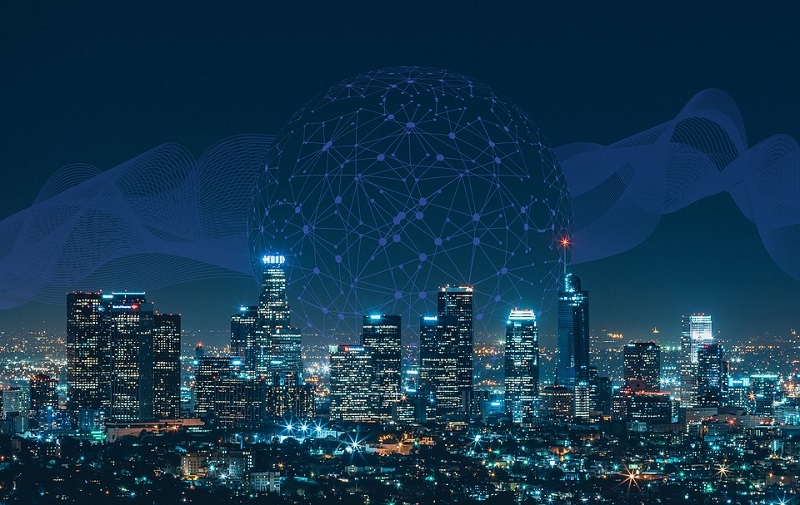In about 30 years, the earth will be home to nearly 10 billion people, 68% of whom will live in urban areas. These urban areas will face a range of problems, so government authorities will have to rely on limited resources to provide public services to an increasing number of citizens. In addition to traffic congestion and potential increases in crime, rapid urbanization can also lead to environmental problems such as air pollution and overwhelmed garbage collection systems. To address these challenges and make cities more livable and manageable, governments are increasingly turning to smart city concepts.
Central to this approach is the use of technology to improve public services such as transportation, water systems, waste management and more. Of all the technologies deployed in smart cities, IoT is the most important because it is a network of sensors and connected devices that collect data that is crucial to understanding how a city functions.


Many ways IoT can help smart cities
Global investment in smart cities is increasing and is expected to reach $135 billion by 2021, up from $80 billion this year. A portion of this funding is used for IoT projects that help governments and residents improve energy efficiency, improve traffic flow, reduce pollution, cut costs, and enjoy many other benefits. In other words, IoT helps smart cities achieve many key goals, such as the city’s traffic congestion problem, which is largely caused by drivers looking for parking spaces. IoT sensors embedded in city streets can detect vacant parking spaces and alert drivers via a smartphone app. This helps people park their cars faster, saving time and fuel while reducing harmful gas emissions.
Many smart cities are also leaning towards promoting bike-sharing services as a way to reduce pollution and congestion, but bike theft can be an obstacle to this plan. One way IoT technology can help solve this problem is through technologies like Bitlock, a keyless bike lock that is unlocked by the user’s smartphone and tracks the bike’s GPS location. This will help police track and recover stolen bikes, while also allowing private and public agencies to analyze cycle traffic patterns and find ways to improve services.
IoT technology is also effective in tracking and analyzing water use in buildings. Smart water management company Banyan Water, for example, claims it has helped customers save more than 7 billion liters of water since its founding in 2011. This is done by placing sensors and ultrasonic meters to track water usage throughout the building, using software to analyze the collected data and spot anomalies such as leaks and clogged pipes.
Municipal waste management companies can also benefit from IoT by placing sensors at waste collection sites, rather than following a strict schedule and dispatching waste transport vehicles only when collection is actually needed. This can reduce garbage collection overhead by up to 60%.
Things to keep in mind when implementing an IoT project
Clearly, IoT technology can improve life in urban areas in many different ways, but simply implementing the latest technology does not necessarily make a city “smart.” Marc Jadoul, head of IoT market development at Nokia, explained that even before the first sensors are installed, authorities must define their future goals and budgets. The next step is to create broadband networks and IoT infrastructure to cater for growing traffic. Mark Gaddoll also suggested authorities need to “think big but start small” and “identify appropriate milestones and metrics” to be able to monitor their progress. In the end, technology is not a goal, but a tool to make people’s lives better and more connected. To this end, authorities should promote citizen participation in “smart” projects by soliciting their feedback and informing them of progress. After all, “citizen acceptance and engagement will ultimately determine the success or failure of any smart city initiative.”
Two key challenges facing IoT and smart cities
While authorities and citizens see smart cities as a way to improve their lives, hackers see smart cities as potential targets. The vast amounts of data and sensitive services generated by connected devices can be misused by bad actors, disrupting the normal operations of cities. For example, imagine if a cyberattack destroyed a traffic light system or water filtration equipment, and the hackers demanded a ransom. This makes cybersecurity one of the key priorities of any smart city effort. Another challenge facing authorities is the need to purchase expensive servers, sensors, high-speed networks and a range of other equipment. Although IoT projects could lead to cost savings and create “up to $2.3 trillion in efficiencies and revenue globally by 2024,” many cities are still struggling to find funding for construction.
Simply rolling out technology is not enough
As our planet becomes increasingly crowded and more people move into cities, government authorities will be under pressure to provide public services to an increasing number of citizens and offset the negative impacts of urbanization. Technologies such as IoT and smart city concepts may be the solution and approach to solving traffic congestion, pollution, inadequate water systems and many other problems, but for this approach to be successful, citizen acceptance and participation is crucial, so Simply rolling out technology is not enough.